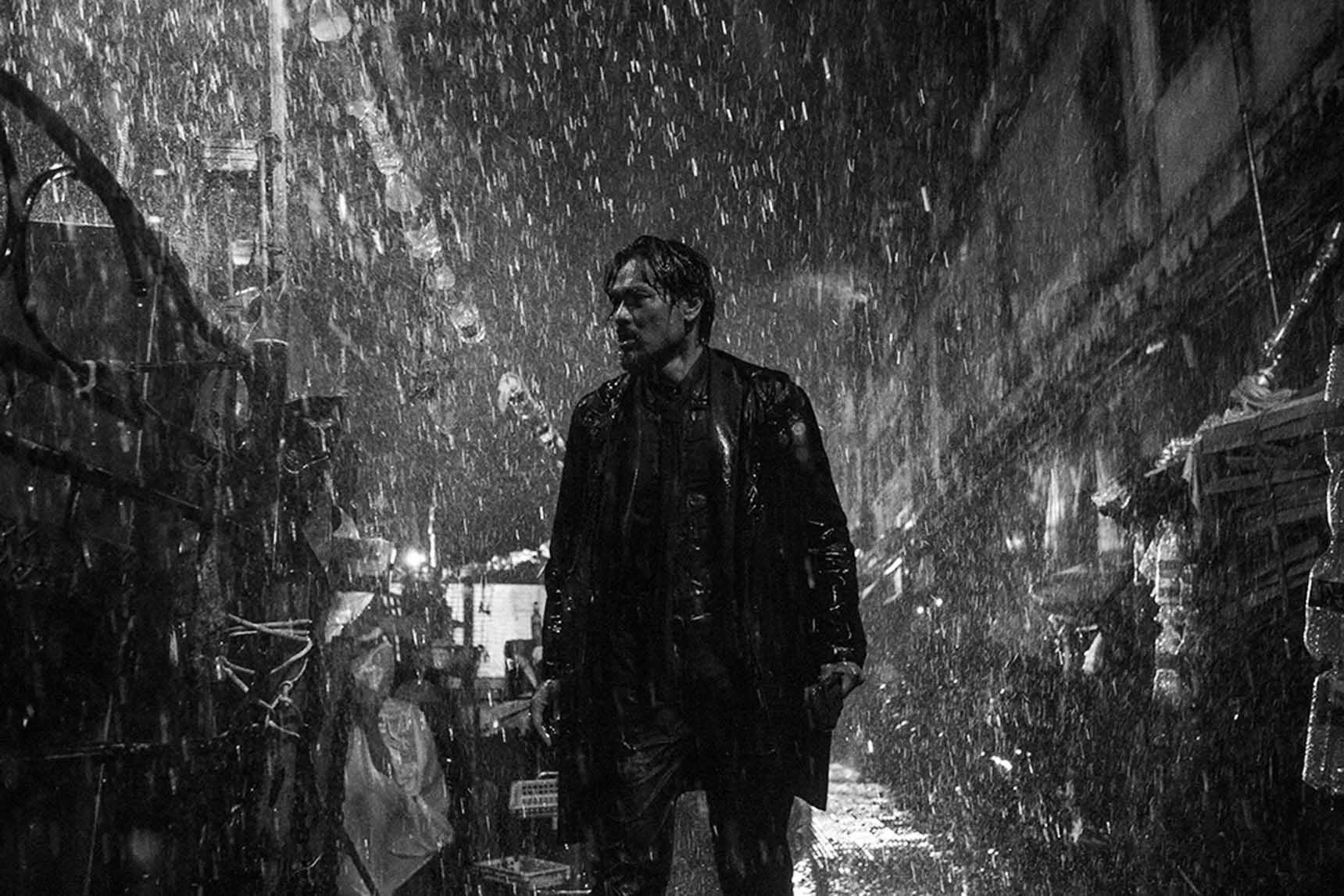A Visually Stunning Descent into Darkness
Most films use color to paint a world for the audience. Limbo (智齒) does the exact opposite. It strips color away, leaving a brutal, rain-soaked cityscape in stark black and white. This bold artistic choice makes it a uniquely powerful HK movie and a modern masterpiece of the crime genre. The film’s director, Soi Cheang, is known for creating immersive and intense worlds, a skill he also showcased in the vibrant, action-packed Twilight of the Warriors: Walled In.
This film is a raw, visceral, and unforgettable cinematic experience that gained international acclaim. Here’s a brief look at what makes it so compelling:
- A Striking Visual Style: Shot entirely in high-contrast black and white, the film’s visuals are its most defining feature. The lack of color creates a nightmarish, oppressive atmosphere that pulls you directly into its world.
- An Intense Crime Story: The plot follows a veteran cop and his rookie partner as they hunt a sadistic serial killer who targets women, leaving their severed hands as a calling card.
- Powerful, Raw Performances: The actors give their all, delivering fearless performances that portray the deep psychological and physical toll of living in a world without hope.
A City Drowning in Its Own Filth
The setting of Limbo is more than just a backdrop; it is a living, breathing nightmare. This version of Hong Kong is not one of postcards and skyscrapers. Instead, it is a city choking on its own garbage. The streets are piled high with mountains of trash, alleyways are clogged with debris, and a relentless rain falls from a permanently grey sky, turning everything into mud and grime.
This environment is hell on earth, and the black-and-white cinematography makes it even more potent. Without color, there is no distraction. We are forced to confront the ugliness and decay head-on. The stark contrast between the deep blacks and the harsh whites gives the film a graphic-novel feel, but the dirt and desperation are terrifyingly real.
Director Soi Cheang uses this world to reflect the internal state of the characters. They are not just surrounded by filth; they are drowning in it. Their moral compasses are skewed, and their hope has been washed away by the constant downpour. The city is a physical manifestation of their spiritual decay, a place where only the most desperate can survive.
Three Broken Souls in Purgatory
The story revolves around three characters, each trapped in their own personal state of limbo.
- Cham Lau (Gordon Lam): Cham is a veteran officer who has seen too much. He is a good cop, but his methods are brutal, and his soul has been corroded by years of dealing with the city’s worst. He is haunted by a past incident where his wife and child were harmed, leaving him with an explosive rage that he struggles to control. He is stuck between his duty and his desire for vengeance.
- Will Ren (Mason Lee): Will is the rookie partner assigned to Cham. He is young, educated, and believes in doing things by the book. He is completely unprepared for the reality of the streets. The city’s savagery is a constant shock to his system, and his partnership with the volatile Cham tests his own moral boundaries. He represents order trying to find a foothold in absolute chaos.
- Wong To (Cya Liu): To is a young ex-con and informant who becomes entangled in the case. She is trying to pay off a debt and survive, but she is caught between the police and the criminal underworld. To’s past actions are directly linked to Cham’s personal tragedy, creating a deeply complicated and painful dynamic between them. Cya Liu’s performance is incredibly brave and physical; she is the bruised, bleeding heart of the film, a person desperately fighting for a chance at redemption that may never come.
A Story of Guilt and a Glimmer of Hope
While the film is a brutal crime thriller on the surface, its real focus is on the theme of atonement. All three characters are wrestling with immense guilt. Cham is guilty over what happened to his family. Will feels the guilt of his own ineffectiveness. And To is crushed by the weight of a past mistake that had devastating consequences.
Their hunt for the killer becomes a painful journey through their own personal hells. The film asks difficult questions about forgiveness and redemption. Can a person ever truly escape their past? Is it possible to find grace in a world that seems to have none?
The action sequences in Limbo are not slick or stylized. They are messy, desperate, and ugly. Fights are frantic struggles in the mud and garbage. Chases are exhausting sprints through flooded, claustrophobic alleyways. The violence is never glorious; it is always painful and consequential. This raw realism makes the story’s emotional stakes feel incredibly high.
Limbo is not an easy film to watch. It is an intense and often punishing experience. Yet, it is also a stunning piece of filmmaking, a bold and uncompromising work of art from a director at the top of his game. It stays with you long after the credits roll, a haunting reminder that even in the darkest of places, the human spirit continues to fight for a sliver of light.

No Responses